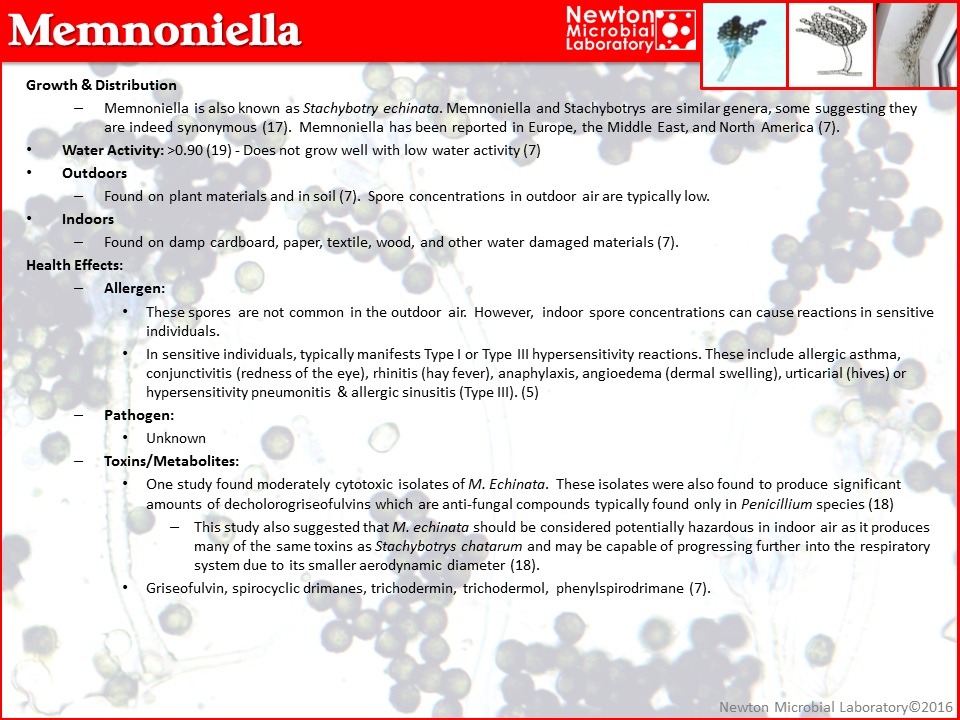Memnoniella
Growth & Distribution
Memnoniella is also known as Stachybotry echinata. Memnoniella and Stachybotrys are similar genera, some suggesting they are indeed synonymous (17). Memnoniella has been reported in Europe, the Middle East, and North America (7).
Water Activity: >0.90 (19) – Does not grow well with low water activity (7)
Outdoors
Found on plant materials and in soil (7). Spore concentrations in outdoor air are typically low.
Indoors
Found on damp cardboard, paper, textile, wood, and other water damaged materials (7).
Health Effects
Allergen:
These spores are not common in the outdoor air. However, indoor spore concentrations can cause reactions in sensitive individuals.
In sensitive individuals, typically manifests Type I or Type III hypersensitivity reactions. These include allergic asthma, conjunctivitis (redness of the eye), rhinitis (hay fever), anaphylaxis, angioedema (dermal swelling), urticarial (hives) or hypersensitivity pneumonitis & allergic sinusitis (Type III). (5)
Pathogen:
Unknown
Toxins/Metabolites:
One study found moderately cytotoxic isolates of M. Echinata. These isolates were also found to produce significant amounts of decholorogriseofulvins which are anti-fungal compounds typically found only in Penicillium species (18)
This study also suggested that M. echinata should be considered potentially hazardous in indoor air as it produces many of the same toxins as Stachybotrys chatarum and may be capable of progressing further into the respiratory system due to its smaller aerodynamic diameter (18).
Griseofulvin, spirocyclic drimanes, trichodermin, trichodermol, phenylspirodrimane (7).

